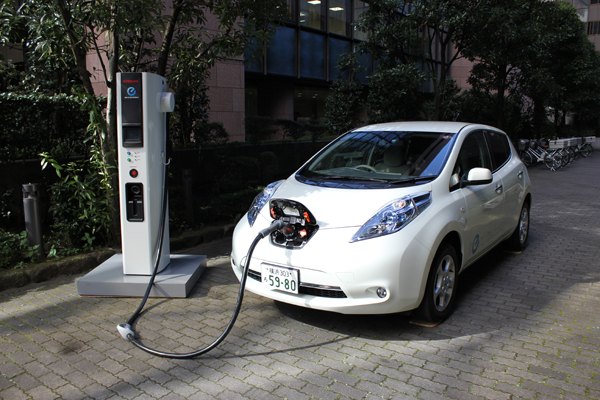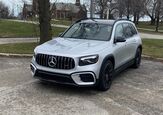Nissan Quickcharger: Half The Size At Half The Price

If you want to charge your Nissan Leaf in 30 minutes, Nissan will (at least in Japan) sell you (reluctantly) a pricy quickcharger. It costs about half of what a U.S. Leaf costs – before incentives and rebates: The current quickcharger sets you back 1.47 million yen, in today’s dollars, that’s about $19,000. Soon, this will get considerably, well, more reasonable. Nissan today announced a quickcharger with the same performance, but at half the size and half the price of the old one.
According to an emailed statement by Nissan, “the newly-developed quick charging unit retains the high performance of the current quick charger manufactured by Nissan,” but will “take up less space and enable easier installation.” A final price is not set. However, Nissan says that the unit will “cost significantly less than one million yen,” and “the base specification unit will cost only below one half the price of the current unit.” That would be around $8.500 – in Japan, including tax.
The new unit complies with the CHAdeMO protocol and is rated at a hefty 49kW at “3- AC200V” (which I assume means 200V 3phase). It produces 500V DC at 125 Amps. Apart from the base unit, a (pricier) outdoor unit and one for cold climes are available. All share the same electrical specs.
Still, the quickcharger is not expected to be a fast moving item. Nissan aims to sell 5,000 of the new quick chargers by March 2016 (!!!). The target market is Nissan dealerships, local government facilities and “locations that draw large numbers of customers in regions throughout Japan.”
The U.S. and Europe will get the charger at some point. Given high enough quantities, the price can drop considerably . A DC welder with similar ratings can be had for less that $1,000.

Bertel Schmitt comes back to journalism after taking a 35 year break in advertising and marketing. He ran and owned advertising agencies in Duesseldorf, Germany, and New York City. Volkswagen A.G. was Bertel's most important corporate account. Schmitt's advertising and marketing career touched many corners of the industry with a special focus on automotive products and services. Since 2004, he lives in Japan and China with his wife <a href="http://www.tomokoandbertel.com"> Tomoko </a>. Bertel Schmitt is a founding board member of the <a href="http://www.offshoresuperseries.com"> Offshore Super Series </a>, an American offshore powerboat racing organization. He is co-owner of the racing team Typhoon.
More by Bertel Schmitt
Latest Car Reviews
Read moreLatest Product Reviews
Read moreRecent Comments
- Akila Hello Everyone, I found your blog very informative. If you want to know more about [url=
- Michael Gallagher I agree to a certain extent but I go back to the car SUV transition. People began to buy SUVs because they were supposedly safer because of their larger size when pitted against a regular car. As more SUVs crowded the road that safety advantage began to dwindle as it became more likely to hit an equally sized SUV. Now there is no safety advantage at all.
- Probert The new EV9 is even bigger - a true monument of a personal transportation device. Not my thing, but credit where credit is due - impressive. The interior is bigger than my house and much nicer with 2 rows of lounge seats and 3rd for the plebes. 0-60 in 4.5 seconds, around 300miles of range, and an e-mpg of 80 (90 for the 2wd). What a world.
- Ajla "Like showroom" is a lame description but he seems negotiable on the price and at least from what the two pictures show I've dealt with worse. But, I'm not interested in something with the Devil's configuration.
- Tassos Jong-iL I really like the C-Class, it reminds me of some trips to Russia to visit Dear Friend VladdyPoo.

































Comments
Join the conversation
"A DC welder with similar ratings can be had for less that $1,000." That remark either shows your ignorance of how lithium battery chargers work, or is meant to be a shocking point of comparison. A 'smart' charger contains a lot more than a rectifying diode and some wiring, particularly at these power levels. You have to monitor numerous parameters to achieve a proper and safe charge, while providing feedback to the customer about state of charge, errors, and other desirables. As for quick-charging, that is an exceptionally bad practice for lithium batteries, and I'm surprised Nissan will stand by the warranty of a car subjected to it.
Sounds like a perfect item for outside of casual restaurants or Starbucks. Pull up, bide your time and change while you wait.